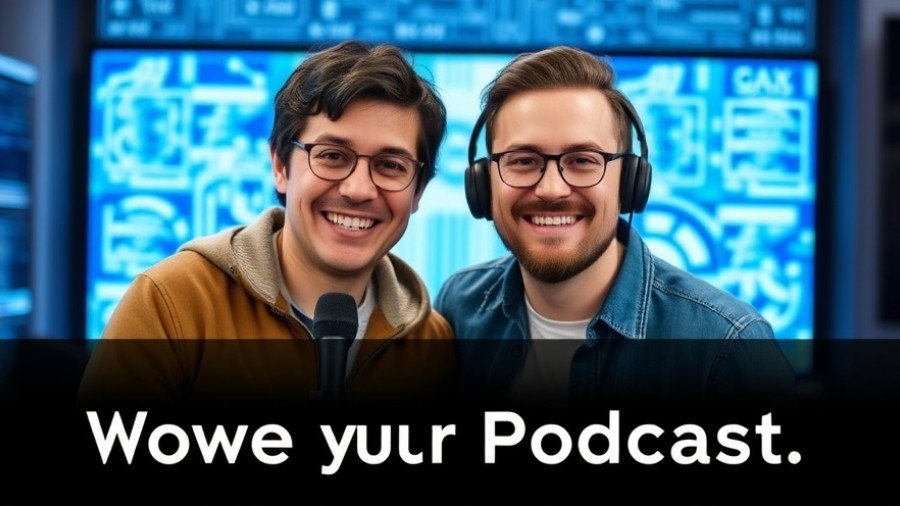Did you know that the average homeowner can save up to $2,500 a year simply by taking on basic repairs instead of hiring professionals? In a time when the rising cost of living strains households everywhere, learning the art of DIY home repairs is more than just a hobby—it’s a smart strategy for saving money while keeping your space in top shape. Whether you’re worried about labor costs , navigating material prices , or just making your house feel more like home, this guide will show you how to put serious savings back into your pocket—without cutting corners. Read on to discover why DIY home repairs cost savings could be the makeover your budget has been waiting for.

How DIY Home Repairs Cost Savings Can Revolutionize Your Household Budget
Over the past year , countless families have faced the rising cost of living, and nowhere is that pinch felt more acutely than in home renovation and maintenance. According to block report surveys and studies in the home improvement sector, more than 60 percent of homeowners are reining in spending or postponing needed renovation projects. This is largely due to focusing on affordable projects and the enduring shock of increasing labor costs and material prices .
But here’s the kicker: while major upgrades grab headlines for being bigger headaches and hefty investments, the real savings are stashed in the smaller, frequent repairs that keep your house running smoothly. Tackling even just a handful of routine jobs can allow you to save money each month, freeing up funds for projects that truly need a professional touch. And if America renovates its way through these challenging economic times, DIY home repairs cost savings provide a path to not only weather the storm, but also enhance your long-term wealth.
DIY home repairs cost savings don’t just impact your wallet; they can bring a sense of accomplishment and control in a world where so much seems defined by big, impersonal costs. With each project you tackle, from patching up drywall to replacing a leaking faucet, the knowledge you acquire and the money you save open up new possibilities for your home and your lifestyle.
Rising Cost of Home Renovation: The Startling Truth Behind the Numbers
Let’s talk facts: A 2023 Hippo Housepower report found that renovation projects are becoming increasingly unaffordable for the average American, driven by factors like labor costs and escalating material prices . Renovations strained household finances for a broad spectrum of Americans, especially those in multigenerational households or newer home buyers and sellers. The report stated that, in many cases, professional fees for simple repairs like unclogging a drain or fixing a leaky faucet can be several times the cost of DIY.
There’s also a big contrast in renovation approach between generations: younger generations are much more likely to take a DIY route for budgetary reasons, while older homeowners often have more funds for professional help. The block report also reveals that many are reined in due to the rising cost of home renovations, causing some projects to be delayed or dropped, despite clear need.
"The average homeowner can save up to $2,500 a year by handling basic repairs themselves instead of hiring professionals." — National Association of Home Builders
Essential DIY Home Repairs Cost Savings: Projects Every Homeowner Should Know
-
Patching drywall
-
Fixing leaking faucets
-
Unclogging drains
-
Replacing light fixtures
If you want to maximize your diy home repairs cost savings , start with the simple projects that professionals often charge a premium for. Patching drywall is a typical repair that might look intimidating, but with the right approach and tools, it’s a straightforward fix that can save you hundreds over time. Equally, fixing leaking faucets not only staves off water damage (and bigger headaches) but also drives down utility bills and prevents hidden costs.
Beyond these basics, learning to unclog drains or replace outdated light fixtures can instantly upgrade your home’s function and aesthetics for a fraction of the typical cost. Not only do these essential tasks deliver immediate financial relief, but they also build your confidence for tackling more complex renovation projects later on. By focusing on less expensive, routine tasks, families keep their living spaces comfortable and their funds for projects that really matter.

DIY Home Repairs Cost Savings for Major Home Renovations
While not every home renovation project is suited for a DIY approach, even major upgrades offer opportunities for meaningful savings. For example, prepping a space for remodeling—such as demolition or site cleaning—can often be handled by a motivated homeowner, reducing the hours billed by professionals. Likewise, jobs like painting or material handling can easily be integrated into your DIY repertoire and yield hundreds in **saving money**.
The major caveat? Some work, especially complex electrical or structural renovations, should be left to the pros for safety and compliance. However, even in these cases, you can supplement professional work by doing prep, sourcing affordable materials, and handling post-project cleanup. The cumulative effect is lower costs, less disruption to your lifestyle, and a greater sense of accomplishment as you see your efforts reflected in every corner of your home.
This approach is particularly useful when navigating renovation projects that might otherwise feel out of reach due to high professional fees or labor shortages. By getting involved where you can, you create a more affordable path for big changes—making DIY home repairs cost savings an ongoing strategy rather than a one-time fix.
Saving Money: Making Smart Decisions with Home Repairs
|
Project |
DIY Cost |
Professional Cost |
Savings |
|---|---|---|---|
|
Patching drywall |
$30 |
$300 |
$270 |
|
Replacing faucet |
$50 |
$250 |
$200 |
|
Painting room |
$100 |
$500 |
$400 |
As you weigh the options for each home repair, it’s essential to remember that not all savings are created equal. While some repairs are almost always cheaper and easier to handle yourself (see table above), others might seem manageable but quickly spiral into unexpected costs if you aren’t prepared. To maximize diy home repairs cost savings , choose your battles wisely and don’t be afraid to invest a bit of time into research before taking on a new project.
The more you understand the contrast between DIY and professional pricing, the better equipped you'll be to allocate your renovation budget. Savvy homeowners know that saving money often comes down to making smarter choices—not just working harder. By using your time strategically and playing to your DIY strengths, you can stretch your dollars further and enjoy the satisfaction of a job well done.
Choosing Between DIY and Professional Help: What Brings the Most Cost Savings?
The decision between doing it yourself and hiring a pro often comes down to two main factors: safety and value. If a job involves specialized skills (such as electrical wiring or major structural changes), it’s usually worth the extra investment for a licensed expert. However, for many repairs, the bulk of the expense lies in labor costs —not the materials.
Take a closer look at your upcoming projects and ask whether you’re paying for skill or convenience. If you’re willing to learn (and willing to embrace a few early stumbles), most basic repairs are within reach—even for DIY newbies. Just be honest about your capabilities and don’t let pride override practicality: sometimes saving money means recognizing your limits, too. Finally, leverage the growing number of online tutorials and community tips, which can make almost any routine fix affordable and easy.

The Value of Home Renovation: Investing in Your Property the Smart Way
Every dollar invested into your home is a step toward building better value, both for your current comfort and your future resale potential. According to industry insight, smart spending on DIY projects can return up to 80% of the investment at resale—an important number for homeowners seeking to maximize their property’s financial return. However, that return shrinks fast if you’re consistently overpaying for labor on jobs you could handle yourself.
That’s why understanding diy home repairs cost savings is so vital. Not only does it let you live in a space that reflects your unique taste and needs, but it ensures that your hard-earned money is reined in for the projects that truly matter. Whether you’re preparing your home for new family members, future buyers, or just your own long-term happiness, a DIY mindset helps keep funds available for changes that last.
"Every dollar spent improving your home can return up to 80 cents at resale—but that return shrinks when overpaying on labor."
How Home Renovations Impact Your Long-Term Finances
Many people underestimate the ongoing impact of smart home maintenance. Small, regular home improvements protect against bigger headaches down the line, preserve property value, and make your home a more enjoyable place to live. For multigenerational households or those experiencing strain from rising costs, DIY can transform renovations from rare, disruptive events to manageable, ongoing habits.
In fact, studies indicate that renovations strained fewer budgets in homes where the residents took an active DIY approach. The generational trends show that when families work together—pooling their time, effort, and creativity—they end up with not just better homes, but also investments that keep their value over time.
Cutting Costs Without Cutting Corners: Quality DIY Home Repairs Cost Savings Tips
-
Always compare prices on materials
-
Invest in quality tools
-
Leverage online tutorials and community resources
-
Stick to proven processes
DIY home repairs cost savings hinge as much on your approach as your effort. Make it a priority to compare prices on every tool and material before purchasing; the difference in cost between brands or retailers can be substantial. Investing in durable, multi-purpose tools will save you money and frustration across multiple projects. Don’t neglect the value of digital resources—today’s online tutorials, forums, and videos make even complicated repairs accessible to beginners.
Sticking to proven processes is just as crucial. Rushing a repair or skipping preparation steps will often lead to more expensive fixes in the future, erasing any immediate savings. By establishing simple best practices—like assembling all supplies before you begin or double-checking each step—you’ll maintain a higher standard of work and truly maximize your savings.
Mistakes to Avoid With DIY Home Repairs Cost Savings
The drive to save money sometimes tempts us to cut corners or take risks. Avoid the common pitfalls of DIY home repairs by never skipping safety protocols: goggles, gloves, and appropriate clothing help prevent accidents that could derail your budget. Don’t rush into complex repairs without deeply understanding what’s required—consult several reputable sources before beginning.
One of the biggest errors is underestimating the importance of preparation. Taking the time to prep your work area, gather the right supplies, and study the process will protect your efforts and, ultimately, your bottom line. Remember that DIY is about working smarter, not faster, so resist the urge to speed through the steps. Learning from past mistakes or the experiences of others (like in community forums) will help you develop confidence and a more robust set of DIY skills.

The Psychological Benefits of DIY: Beyond the Cost Savings
There’s more to diy home repairs cost savings than just numbers; the personal rewards can be just as meaningful as the financial ones. Tackling your own repairs gives you a sense of autonomy, competence, and control over your environment. Studies have even linked successful DIY projects to improved confidence and greater satisfaction with your living space.
The process can also be a powerful bonding tool. Working alongside family members to solve problems and celebrate accomplishments creates memories just as valuable as the savings you tally up. These shared successes can set a positive example for younger generations, fostering a lifelong appreciation for both frugality and craftsmanship.
"Tackling your own home repairs not only saves money—it also builds your confidence and connects you deeper to your living space."
Learning, Achievement, and Family Bonding Through DIY Home Repairs
The best diy home repairs cost savings stories are about more than just the money. They’re about learning something new with your child, teaching practical skills to a teenager, or simply enjoying a sense of achievement as a family unit. When everyone pitches in—whether by holding a paintbrush, reading instructions, or sorting screws—the project becomes an experience that deepens family bonds and enhances collective achievements.
Especially in multigenerational households where renovation projects are a group endeavor, these shared moments forge lasting connections. And for families reined in due to rising costs, DIY can be the secret to keeping the house both functional and livable, while still having funds for fun or future needs.

How to Start Your Own DIY Home Repairs Cost Savings Routine
-
List and prioritize your home repair needs
-
Research best techniques
-
Gather necessary tools and supplies
-
Begin with small, manageable projects
The biggest hurdle for most homeowners isn’t a lack of motivation—it’s not knowing where to start. The key is to make a plan: walk through your home and jot down every issue, then prioritize based on urgency and budget. Once you’ve organized your list, research the best repair techniques for your top priorities using trusted online tutorials or community advice.
Assemble your materials before you begin. A well-stocked toolbox doesn’t just save time; it also boosts your confidence and reduces the temptation to wing it mid-project. For your initial repairs, choose small, clearly defined tasks. Success with quick wins will build your skills, making bigger projects feel more accessible and less intimidating.
Building a Sustainable Habit for Ongoing DIY Home Repairs Cost Savings
Like any new skill, the secret to lasting DIY success is consistency. Schedule regular maintenance checks, set reminders for future repairs, and don’t shy away from asking friends, neighbors, or online communities for advice and support. Over time, this proactive approach will help you avoid emergencies and keep repair costs low for the long haul.
Motivation comes from seeing real results—both in your home and in your bank account. The more positive experiences you rack up, the more likely you are to make DIY a lasting habit. Not only does this approach ensure your home remains a comfortable and affordable place within reach, but it also offers valuable life skills for everyone involved.

People Also Ask About DIY Home Repairs Cost Savings
How much money can I actually save with DIY home repairs?
Depending on the types and frequency of repairs, most homeowners save hundreds to thousands of dollars each year by choosing DIY over professional services. Small projects add up quickly, especially when professional labor costs are high.
Are DIY home repairs safe for beginners?
Yes, as long as you start with basic repairs, follow safety protocols, and consult reputable tutorials. For complex or potentially hazardous repairs (like electrical or structural work), consult with or hire a professional.
What DIY home repairs offer the best cost savings?
Simple projects such as painting, caulking, patching drywall, replacing faucet washers, and unclogging drains typically offer the largest savings compared to their low material cost and high professional fees.
Frequently Asked Questions on DIY Home Repairs Cost Savings
Can I get quality results with DIY home repairs cost savings techniques?
Absolutely. With the right research, planning, and patience, homeowners regularly achieve results that rival or even surpass professional work. The key is to stay organized, use trusted resources, and never rush the process.
How do I budget for home renovation projects the DIY way?
Start by listing your upcoming repair and improvement needs, then estimate material and tool costs by shopping competitively. Track your expenses, set a total project limit, and reserve 10-15% as a contingency for unexpected issues.
Where can I learn more DIY home repairs cost savings strategies?
Countless resources are available online, including DIY blogs, YouTube tutorials, and forums like Reddit’s r/HomeImprovement. Don't overlook local community classes and neighborhood tool-lending libraries for affordable, hands-on learning.
Final Thoughts on DIY Home Repairs Cost Savings: A Smart Path Forward
"By making strategic choices in home repairs, you preserve your finances, boost your home's value, and enjoy the satisfaction of self-reliance. Now's the moment to take control of your home's future—and your budget."
 Add Row
Add Row  Add
Add 




Write A Comment